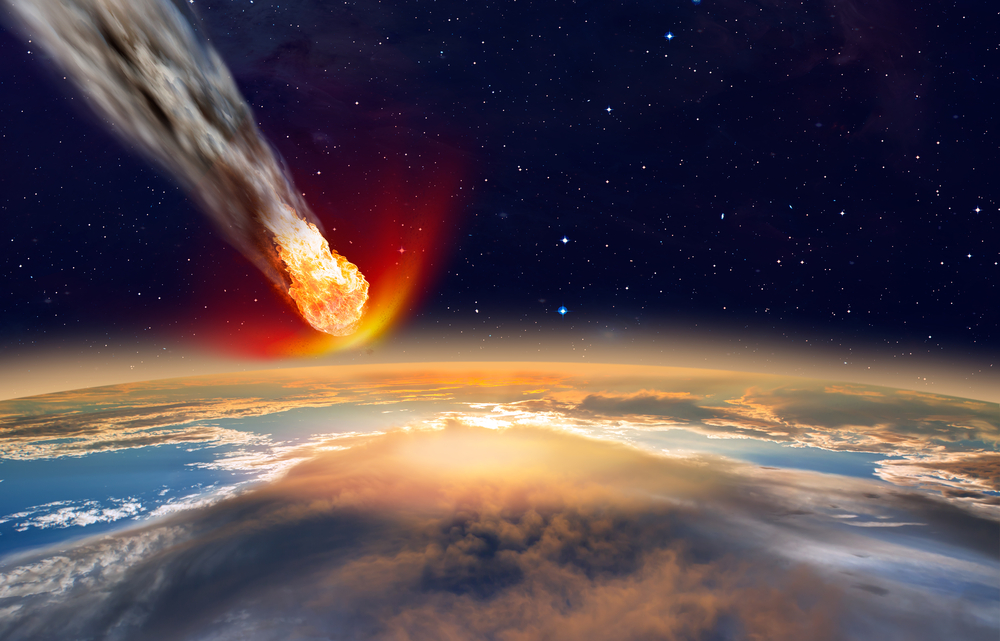The future after NASA's experiment. The asteroid changed direction

Posted on 09/28/2022 11:30:39 AM PDT by Red Badger
Video released by the ATLAS project shows the explosive impact 7 million miles from Earth.
a gray, craggly asteroid against the dark of space Our first up-close look at Dimorphos, captured by the DART probe's DRACO camera.
NASA/JHUAPL When NASA deliberately crashed its DART spacecraft into an asteroid Monday, the daring but doomed probe was sending back incredible images. But on impact, the screen faded to black. We couldn't see just how big of a dent that DART made.
Fortunately, many telescopes around the world were tracking the asteroid pair known as Didymos and Dimorphos. The ATLAS project, which takes advantage of telescopes across the world, grabbed a great video of the moment of impact, which occurred about 7 million miles from Earth.
You can see it below:
VIDEO:
https://twitter.com/fallingstarIfA/status/1574583529731670021?ref_src=twsrc%5Etfw%7Ctwcamp%5Etweetembed%7Ctwterm%5E1574583529731670021%7Ctwgr%5E19fa66fdb0a5eb321b5e52131eb80a9f0913960e%7Ctwcon%5Es1_&ref_url=https%3A%2F%2Fwww.cnet.com%2Fscience%2Fspace%2Fnasa-telescope-captures-epic-collision-between-dart-probe-and-asteroid-dimorphos%2F
ATLAS, or the Asteroid Terrestrial-impact Last Alert System, is a collaboration between NASA and the University of Hawaii. It is designed to detect rogue space rocks, including those that might be a threat to Earth, scanning the skies several times each night.
The ATLAS telescopes in Hawaii were focused on Didymos and Dimorphos during DART's collision on Monday. The probe was traveling at over 14,000 miles per hour when it hit the smaller of the two: Dimorphos, an asteroid that's the size of Rome's Colosseum and that orbits Didymos.
The time of impact was 4:14 p.m. PT. The moment shows a brightening and a plume of light erupting around the crash site as DART ends with a bang.
It was a bang heard 'round the world. Not literally, of course. There was no sound -- but plenty of viewers watched on NASA's livestream as the probe's cameras delivered its death dive second by second. The DART mission is a test to see if we can knock space rocks off course, should they ever be headed our way.
We'll have to wait for a few more telescope images -- and a 2024 mission -- to find out exactly how much impact DART had.
It was dreadful. And worrisome.
Bkmk
Where’s the kaboom? There was supposed to be an asteroid shattering KABOOM!
Spacecraft’s point of view:
https://www.youtube.com/watch?v=eD7WseCTC9s
Satellite point of view:
https://www.youtube.com/watch?v=KK69hej1A6w
Thanks. I guess that’s as good as the videos get, for now.
Great. Now the Asteroidians will shoot back.
L
One of my kids is an astronautical engineer at nasa. We had a family chat going as we all watched it live. (We do that frequently for big launches)
It’s a cool way to keep the family together. My trucker son even joined from his cab. (Of course he didn’t watch because he was driving)
We all think the mission is kind of dumb

Everything about this mission could have been modeled on a computer. The Laws of Physics work in space as well as on the Earth.
The only variable they couldn’t model is “Can they actually hit it?”
But this rock is in a known orbit, and probably has been for millennia.
A dangerous rock is one that suddenly comes in from the outer fringes and intersects Earth’s orbit at a collision point.
THEN you have to do all kinds of calculations to get the trajectory and speed exactly right and the calculations to intersect that rock at exactly the right time and angle, with enough mass to either destroy it or nudge it into a different trajectory......................
Hmmm...... OK but
I would counter suggest “a google of nerds”
But it was computer modeling that gave us the phony global warming scam and its offshoot climate change, remember?
True, but physics is a lot simpler than the climate.................
I have suggested for many years that asteroids of that type should have a rocket motor landed on them, to be fired at the appropriate time to change its trajectory to miss Earth by at least one moon’s distance. It would be more predictable than the results of crashing something into it.

Disclaimer: Opinions posted on Free Republic are those of the individual posters and do not necessarily represent the opinion of Free Republic or its management. All materials posted herein are protected by copyright law and the exemption for fair use of copyrighted works.